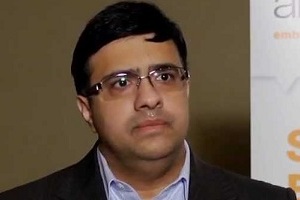We keep hearing that the Internet of Things (IoT) will encompass 50 billion devices by 2020 and that these devices will generate trillions of transactions.
It may be a sensor on a lamp post that makes note of a connected car going by; devices in agricultural settings that will let farmers know details about soil and crop conditions; or health monitors that are constantly sending data for analysis. And, says Ari Banerjee of NetCracker Technology, industry experts estimate that over the next 10 years there’s the potential for $13 trillion in IoT revenues for organisations that can master how to monetise this opportunity.
The IoT will drive operators toward interesting and innovative business models, but it’ll require effort on the part of CSPs. By leveraging existing connectivity, mobility and service delivery capabilities — and investing in IoT platform features such as cloud-based data analytics, application services, rules-based engines and dynamic rating/bidding scenarios — CSPs will be well positioned to help their customers unlock new revenue opportunities and create a lucrative ecosystem that will benefit all players.
Evolving to a Digital Service Provider (DSP)
Operators are today at the cusp of Digital Transformation in order to transform themselves into DSPs. In our opinion this transformation involves digital service portfolio and capabilities required by service providers to deliver those services to end customers. Digital transformation involves focusing existing technologies or new investment in technology and business models to effectively engage digital consumers at every touch point in the customer experience lifecycle.
In order to become a DSP Operators need to completely reimagine and reinvent how their businesses should operate to connect fully with customers, in every channel — in stores, online, and increasingly through mobile devices. It is now table stakes for telecom operators to undergo digital transformation and offer an integrated, Omni channel, personalised digital experience to their end customers. Hence, to successfully transition to become a digital service provider (DSP) operators need a delivery architecture which is integrated, partner driven, real-time, seamless, contextual, automated and analytics driven.
Next-generation mobile networks
LTE is already causing a fundamental rethink in how services are created and delivered, and this will only become more challenging as 5G enters the picture with its always-on connectivity, faster speeds and extremely low latency, which will enable more real-time interactive multimedia services, such as augmented reality, virtual reality and real-time online games.
We’ll see many more LTE and 5G rollouts in 2016, but operators will need to ensure their business models also take into account integration with fixed-line business and look to partnerships on all aspects of the business to capture revenue opportunities and thrive in a hyper-competitive market segment.
Customer experience
Underpinning all of these trends is the absolute need for operators to not lose sight of the customer, and more specifically, their level of service quality, engagement, satisfaction and ultimately loyalty. And at a time when service offerings can look similar from one operator to another, the only way to stand out from the crowd is by offering a superior customer experience.
The provider that manages to do this will be more efficient, more proactive and ultimately more innovative than the competition. But to get to this point, operators will need to embrace social, mobility, analytics and cloud in order to proactively find problems, which will then lead to reduced churn, being able to launch new services and ultimately achieve significant competitive advantages.
Looking down the road
No one can predict for sure what the New Year will bring, but one thing that’s certain is the communications industry will look very different. Along with new ways of looking at networks, creating and managing services and providing the best experience possible, operators will need to make sure they have the right BSS/OSS architecture in place in order to incubate, deliver and monetise these new technology related business models.
The author is Ari Banerjee, senior director, Strategy, NetCracker Technology.
Comment on this article below or via Twitter: @ VanillaPlusMag OR @jcvplus






